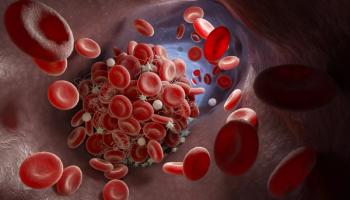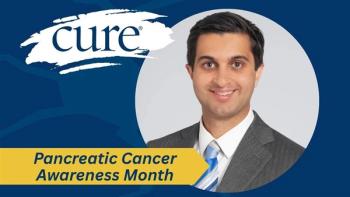
Immunotherapies Show Promise in Mesothelioma, Small Cell Lung Cancer
Key Takeaways
- Immune checkpoint inhibitors show promise in SCLC and mesothelioma, offering durable responses and benefits in platinum-sensitive and refractory SCLC.
- Combination therapies, such as Opdivo and Yervoy, demonstrate improved outcomes over monotherapy in trials like CheckMate-032.
Immune checkpoint inhibitors have demonstrated encouraging results for patients with small cell lung cancer (SCLC) and mesothelioma, two aggressive thoracic malignancies with few options.
Immune checkpoint inhibitors have demonstrated encouraging results for patients with small cell lung cancer (SCLC) and mesothelioma, two aggressive thoracic malignancies with few options. This topic was addressed in a presentation by M. Catherine Pietanza, at the 10th Annual New York Lung Cancer Symposium, a gathering of oncologists and other oncology professionals in early November 2015.
“The antibodies to CTLA-4, PD-1, and PD-L1 can be safely given to these patients. Responses are seen and are durable. There is a benefit in both platinum-sensitive and platinum-refractory SCLC,” said Pietanza, a medical oncologist at Memorial Sloan Kettering Cancer Center.
Chemotherapy has traditionally been the treatment of choice for most patients with SCLC and mesothelioma beyond the frontline setting. However, outcomes are poor with these therapies, specifically for SCLC, where the median survival following second-line therapy ranges from six to nine months.
“Pace of development of drugs for these malignancies has lagged behind NSCLC,” said Pietanza. “Both malignancies are associated with immunogenic effects. While PD-L1 expression is minimal to nonexistent in SCLC, it is quite high in mesothelioma.”
For those with SCLC, two studies have reported their findings, with several trials ongoing. In the phase 1/2 CheckMate-032 trial,1 patients with pretreated SCLC received the single-agent PD-1 inhibitor Opdivo (nivolumab) or the combination of Opdivo and the CTLA-4 inhibitor Yervoy (ipilimumab).
In the trial, 80 patients received Opdivo at 3 mg/kg every 2 weeks. For the combination arm, 47 patients received Opdivo at 1 mg/kg and Yervoy at 3 mg/kg every three weeks. Treatment in both arms was continued for four cycles followed by Opdivo alone at 3 mg/kg every two weeks. In the single-agent group, a majority of patients had received two to three prior therapies (60 percent) and 55 percent were sensitive to frontline platinum-based therapy. In the combination group, most patients had received 1 prior therapy (55 percent) and 45 percent were sensitive to platinum treatment.
In evaluable patients, Opdivo monotherapy demonstrated an objective response rate (ORR) of 12.7 percent and a stable disease (SD) rate of 16.4 percent. The median duration of response (DOR) had not yet been reached (ranging from 19.4 to 61.6-plus weeks).
In the combination arm, the ORR was 31.1 percent, with a 2.2 percent complete response rate. The SD rate for the combination was 22.2 percent. The median DOR was 30.4 weeks (ranging from 5.7 to 41.8-plus weeks).
Median progression-free survival (PFS) with single-agent Opdivo was 1.38 months. In the combination arm, median PFS was 3.35 months (1.41-6.87). The nine-month PFS rates were 10.2 percent and 30.4 percent for the single-agent and combination, respectively.
Median overall survival (OS) with Opdivo alone was 3.55 months and was 7.75 months with the combination. The one-year OS rates were 27.1 percent and 47.5 percent, for the monotherapy and combination arms, respectively.
The treatment-related adverse events (AEs) associated with treatment were generally mild and consistent with previous experiences. All grade AEs occurred in 41.3 percent of patients treated with monotherapy and in 83 percent of those who received the combination. Grade 3/4 AEs were seen in 11.3 percent of those treated with Opdivo alone and in 31.9 percent of individuals who received the combination.
“Obviously, very impressive is the progression-free survival being 30 percent with the combo and about 10 percent at nine months for Opdivo alone, this is quite impressive,” Pietanza said. “I don't know if we would see these results with topotecan. Some of these patients have had more than two lines of therapy.”
In the phase 1b KEYNOTE-028 trial,2 24 patients received the PD-1 inhibitor Keytruda (pembrolizumab) at 10 mg/kg every 2 weeks. All patients had received prior chemotherapy, specifically platinum/etoposide (100 percent), irinotecan or topotecan (46 percent) and/or a taxane (29 percent). All patients were PD-L1-positive.
With Keytruda the ORR was 29.2 percent, which consisted entirely of partial responses, The SD rate was 4.2 percent and the DOR was 29 weeks (ranging from 0.1 to 29.1 weeks). Median PFS was 1.8 months, with a six-month PFS rate of 32.5 percent.
Overall, 62.5 percent of patients experienced a treatment-related AE of any grade with Keytruda. Grade 3/5 AEs occurred in 8.3 percent of patients, including 1 grade 5 incidence of colitis.
“There are numerous ongoing studies in small cell lung cancer utilizing these agents that are open or are about to be open at multiple institutions,” Pietanza noted. “I suggest we all look for them and enroll our patients on them — it is the only way that we are going to make very strong conclusions about these agents.”
For patients with malignant pleural mesothelioma, studies have explored Keytruda, the CTLA-4 inhibitor tremelimumab, and the PD-L1 inhibitor avelumab. In patients with mesothelioma, studies have revealed that PD-L1 expression is associated with a worse prognosis, further warranting the exploration of these agents.
In the 29-patient study of tremelimumab,3 the ORR was 6.9 percent and the DOR was 12.4 months. The median OS was 10.7 months and the median PFS was 6.2 months. The one-year OS rate was 48.3 percent and the two-year OS rate was 36.7 percent. All-grade treatment-related AEs were seen in 76 percent of patients; however, grade 3/4 events were less common (13 percent).
“The survival is pretty interesting, if you look at the median progression-free survival and the median overall survival it is approximately what is seen in some second-line trials,” Pietanza said. “It is the one- and two-year survival rates that really identify a subset of patients with mesothelioma who benefit from anti—CTLA-4 therapy."
In a study exploring Keytruda in 25 PD-L1-positive patients,4 the ORR was 28 percent with a DOR that was not yet reached (ranging from 10.4 to 40.3-plus weeks). The median PFS was 5.8 months, with a 50 percent six-month PFS rate. The all-grade AE rate was 60 percent and grade 3/4 AEs occurred in 16 percent of patients.
Similar findings were seen in a study exploring avelumab in 20 patients who were not selected by PD-L1 status.5 The ORR was 15 percent and the median PFS was 16.3 weeks. All-grade AEs were seen in 85 percent of patients and grade 3/4 AEs were experienced by 15 percent of individuals.
To further expand upon these results, a number of clinical trials are currently being conducted. In addition to single-agent studies for Keytruda and tremelimumab, studies are exploring the combinations of durvalumab and tremelimumab and single-agent Opdivo.
References:
- Calvo E, Lopez-Marin, JA, Bendell J, et al. Nivolumab (NIVO) monotherapy or in combination with ipilimumab (IPI) for treatment of recurrent small cell lung cancer (SCLC). Presented at: 2015 European Cancer Congress; September 25-29; Vienna, Austria. Abstract 3098.
- Ott PA, Elez E, Hiret S, et al. Pembrolizumab for ED SCLC: Efficacy and Relationship with PD-L1 Expression. Presented at: 16th World Conference on Lung Cancer; September 6-9; Denver, CO. Abstract 3285.
- Calabro L, Morra A, Fonsatti E, et al. Efficacy and safety of an intensified schedule of tremelimumab for chemotherapy-resistant malignant mesothelioma: an open-label, single-arm, phase 2 study. Lancet Respir Med. 2015. 3(4):301-309.
- Alley EW, Molife LR, Santoro A, et al. Clinical safety and efficacy of pembrolizumab (MK-3475) in patients with malignant pleural mesothelioma: Preliminary results from KEYNOTE-028. Presented at: 2015 American Association of Cancer Research Annual Meeting. Abstract CT103.
- Hassan R, Thomas A, Patel M, et al. Safety and clinical activity of avelumab (MSB0010718C), an anti-PD-L1 antibody, in patients with advanced, unresectable mesothelioma: A phase IB trial. Presented at: 2015 European Cancer Congress; September 25-29; Vienna, Austria. Abstract 3110.





